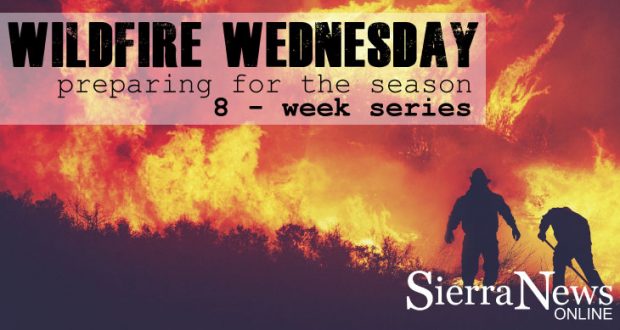This is the second in a series of articles SNO will be doing called “Wildfire Wednesday.” To begin, there will be 8 articles presenting “The 12 Step Guide to Help Plan in Advance for Evacuation.” This guide was put together by Katie Hepler and the members of the California Fire Support Group on Facebook. The California Fire Support Group is “intended to allow collaboration between those who have been through the fire and recovery process, and those who want to be prepared or are currently experiencing a fire.” Katie Hepler got involved in wildfire relief and recovery in 2015 when the Butte Fire devastated the community of Mountain Ranch and Calaveras County.
MOUNTAIN COMMUNITIES — Wildfire season is just around the corner and being prepared is vital for keeping your family and community safe. Following is Step 2 from “The 12 Step Guide to Help Plan in Advance for Evacuation.” This guide was put together by those who have experienced evacuations firsthand. The guide is set up in a way that encourages you to do the work now, ahead of time, so that if and when you need to evacuate, you will be able to do so quickly and safely.
Step 1: Make an Evacuation Plan available here.
Step 2: Create an Evacuation Binder
Having a binder with premade instructions from yourself, telling YOU what to do in an emergency – it can definitely be helpful! You’ve already thought of it all, and now you just need to follow your own instructions. This can be as simple as a three ring binder. One suggestion might be to add a cover sheet labeled “Evacuation Plan.” Later, we will discuss making a second binder for sensitive and important documents (Household Binder).
Here are some items you may want to include in your Evacuation Plan Binder:
- A copy of your evacuation plan, refer to step 1.
- A list of items needed for evacuation, we will discuss further in step 9.
- Tasks to complete before leaving house.
- A list of emergency contacts.
- Photographs of each family member and pet.
For examples of lists and ideas refer to these websites: Preparing for Evacuation and Evacuation. Always include your ideas as well.

Ready, set, selfie with your pet! Have a current photo of you with your pet in case you are separated during a disaster.
For the photographs of each family member and pet, you should have a current picture of everyone who should be out safe. The most updated photographs make it easier in the event you are unable to find a family member; the photo can be shared to help locate them. These can easily be printed on regular paper or photo paper and added to your binder. Use protective sleeves for pictures on photo paper. It’s not a good idea to keep these photos only on your cloud or external drive (more in step 6), as you may not have immediate access to them if needed. It is important to have both a hard copy and digital copy if available.
 Your emergency contact section should have the phone number for your family’s meetup or backup contact. It should also contain any names, phone numbers, and addresses of people you may want to notify or contact following an evacuation. You should always have an out-of-area point of contact as well. This could include family members, friends, employers, employees, schools, etc. You may lose your phone at some point, or lose all power for your phone. Having a hard copy of this information can be very helpful.
Your emergency contact section should have the phone number for your family’s meetup or backup contact. It should also contain any names, phone numbers, and addresses of people you may want to notify or contact following an evacuation. You should always have an out-of-area point of contact as well. This could include family members, friends, employers, employees, schools, etc. You may lose your phone at some point, or lose all power for your phone. Having a hard copy of this information can be very helpful.
It’s also not a bad idea to make multiple binders. These could be for different locations in the home or for each family member to keep in case you get separated. It also may help to separate the sections with tabs, and place some items (like photo prints) in sheet protectors.
Below are some links to purchase supplies for creating your binders if interested. We may receive monetary compensation if you purchase from here.




